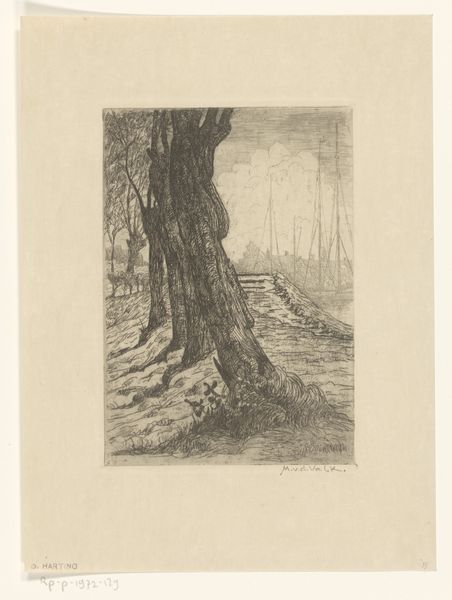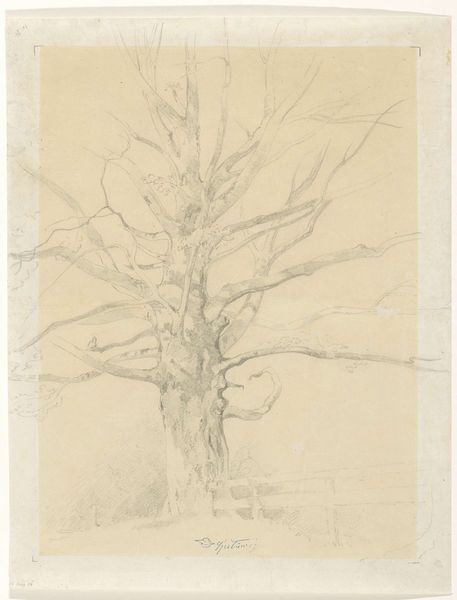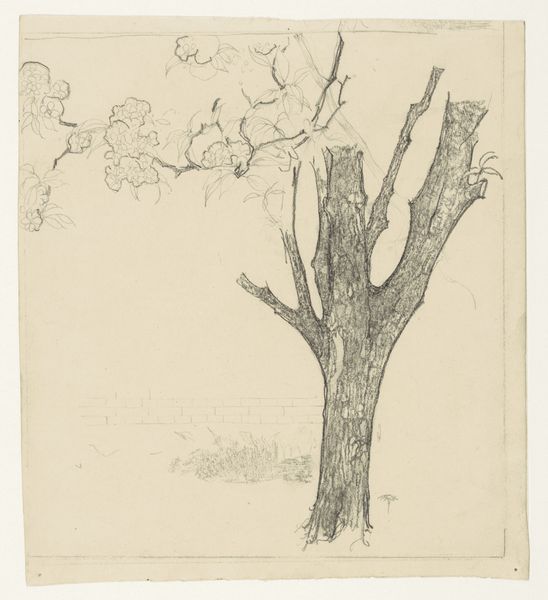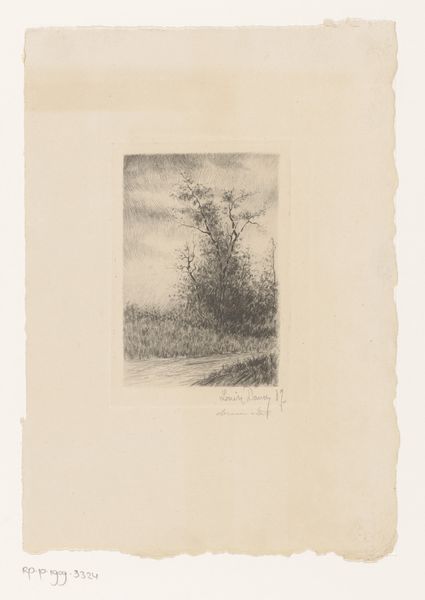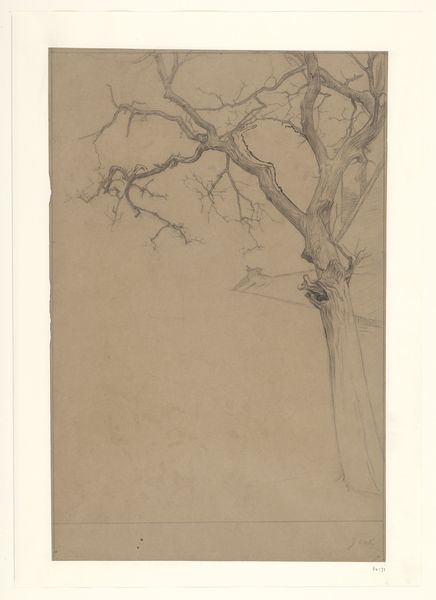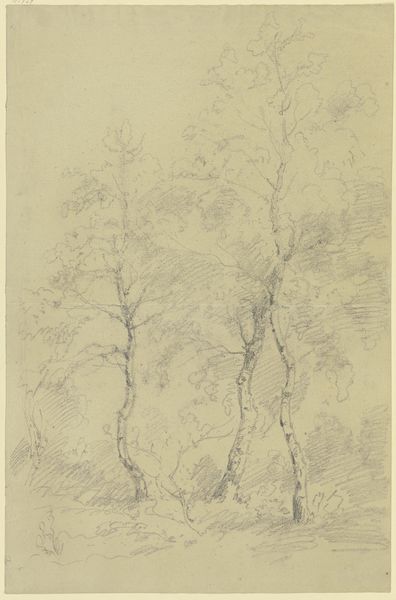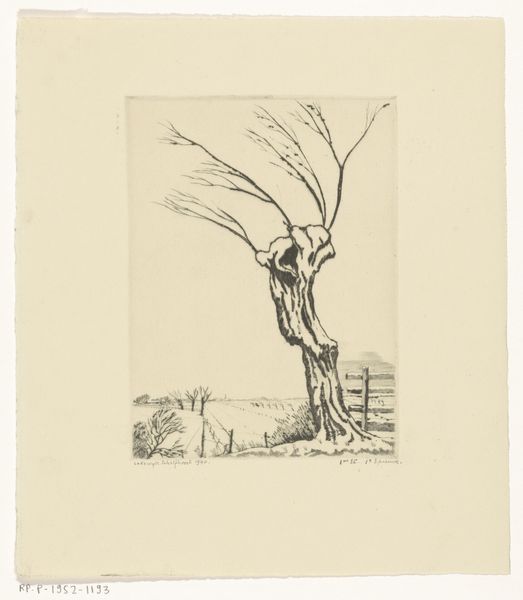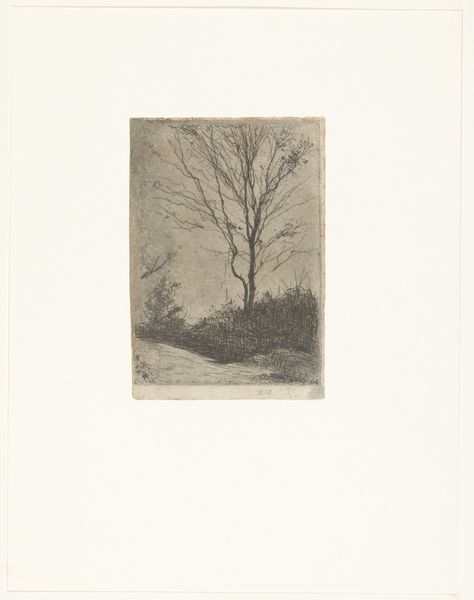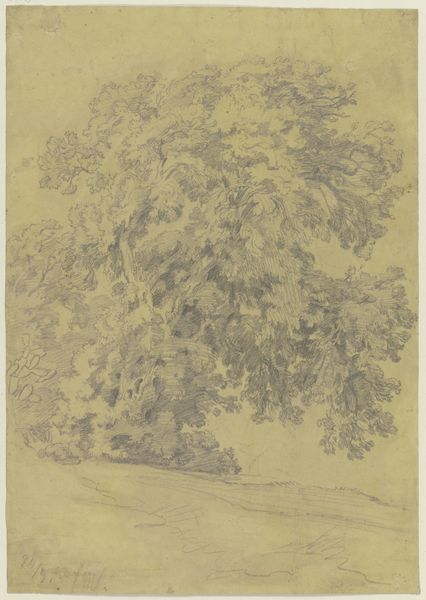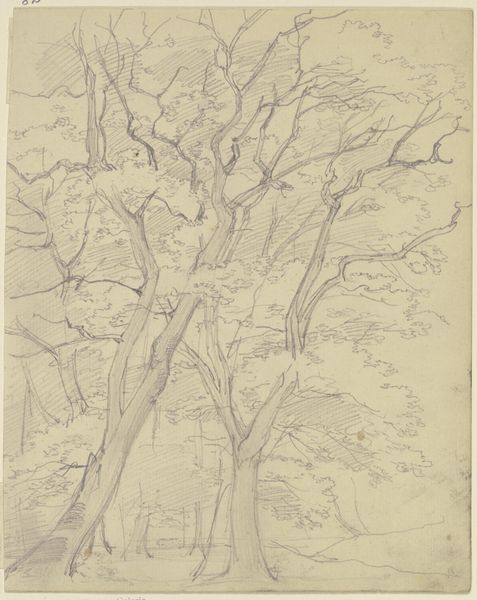
drawing, pencil, graphite
#
drawing
#
landscape
#
pencil
#
graphite
Dimensions: height 309 mm, width 217 mm
Copyright: Rijks Museum: Open Domain
Curator: What a wonderfully understated drawing. I'm immediately struck by its simplicity. The textures create a certain depth... there is such quiet emotion, a sense of being present. Editor: You're right, there's something meditative about it. We're looking at "Bomenrij bij een duin," or "Row of Trees by a Dune" by Maurits van der Valk. The artwork date spans from 1867 to 1935. He renders it with the most humble of materials: graphite and pencil on paper, exhibited here at the Rijksmuseum. What strikes you as evocative? Curator: For me, it is how the trees aren't just trees, but stand as sentinels. Their presence—rough bark and twisted forms sketched against the sky—conjures up thoughts of endurance. And aren't dunes often viewed as boundaries, thresholds, both physically and metaphorically? This composition implies contemplation, and liminality, doesn't it? Editor: Interesting. Knowing van der Valk's background and the socio-political context in which he worked, these dunes might also speak to the changing landscape of the Netherlands at that time, of urbanization and preservation efforts. It’s also hard not to wonder who he envisioned walking this path. Was it a hopeful family out for leisure? Curator: That's fascinating. Did these "everyman" people of that time read Nature and find a language for inner states mirrored through landscapes? I think, visually, the drawing emphasizes emotional understanding: a quiet but sturdy affirmation that is always found in our relationship with landscape. Editor: Precisely. The historical backdrop informs how the scene reflects national identity or an imagined community at the nexus of industrial development. His artistic peers, active in their representation of working-class citizens, were trying to redefine society. Does the symbolism then carry new, perhaps intended resonance when exhibited for a wider audience? Curator: Undoubtedly. Van der Valk tapped into archetypal symbols of persistence in landscape, then his work reverberates on a new level that also reflects his peers as much as nature itself. This artwork, while minimalist, provides profound insights, from historical events to landscape psychology, which should make it timeless. Editor: Yes, the interplay between history and enduring imagery truly deepens our understanding and its message, right? Well, thanks for sharing those beautiful and insightful observations, especially from your perspective. Curator: The pleasure was mine! Thank you for giving historical perspective as to what was the public role of imagery at that time.
Comments
No comments
Be the first to comment and join the conversation on the ultimate creative platform.
